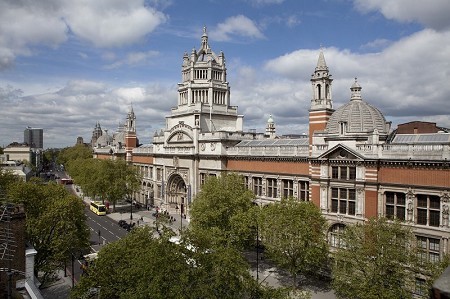Definitely an underated material wood-n't you agree?
Light, strong, affordable and versatile, plywood is the unlikely material behind an eclectic array of groundbreaking designs to be celebrated in a world-first exhibition at the V&A this summer. From the fastest and highest-flying aeroplane of WWII, the de Havilland Mosquito, to the downloadable self-assembly WikiHouse, more than 120 objects will be brought together in an exploration of how the often-overlooked product has helped create the modern world.

Fragments of layered board have been found in ancient Egyptian tombs, but it was the advent of mass production in the nineteenth century that saw plywood’s adaptability and potential fully exploited. Used to construct everything from a tube to house an experimental elevated railway in 1867 New York to hatboxes, tea chests, surfboards and skateboards, plywood has been embraced by designers, architects and engineers; each successive generation finding ever-more innovative ways to shape, mould, cut and fix it.
Opening this July, Plywood explores the near-ubiquitous material’s global impact and history from the 1850s to the present day. The exhibition brings together significant new research with new acquisitions and objects that have never before been on public display. It will take visitors through plywood’s many reputational transformations; from a cheap product that was often hidden or maligned for its inferiority to solid timber, to the material prized by mid-century modernists and by today’s flourishing maker movement.
Coupling objects drawn from the V&A's world class furniture, design and architecture collections with significant loans from across the globe, highlights include early experiments in plywood, such as a 1908 book printed during Ernest Shackleton’s Nimrod expedition to Antarctica and bound with plywood covers; celebrated pieces by modernist designers such as Alvar Aalto, Marcel Breuer, Grete Jalk, Robin Day and Charles and Ray Eames; and striking examples of transport design such as 1917 moulded canoe, a 1960s British racing car with plywood chassis, and some of the first ever surf and skate boards.
Interspersed throughout the displays are three ‘process’ moments that mark important milestones in the evolution of plywood manufacture: the invention of the rotary veneer cutter in the early 19th century; the advent of moulding techniques that inspired the ground-breaking forms of 1930s modernism; and plywood’s recent dominance as a material for CNC-cutting and digital manufacture.
In the John Madejski Garden, a cluster of ice skating shelters designed by Patkau Architects will be on display throughout the exhibition. Visitors are invited to take a seat in the structures which are made by bending flexible plywood sheets and attaching them to a timber frame to create sculptural forms. The shelters were originally designed to sit on a frozen river in Winnipeg, Canada and the installation is supported by the American Friends of the V&A.
Christopher Wilk, exhibition co-curator and Keeper of Furniture, Textiles and Fashion at the V&A, said: “Plywood is such a common, everyday material that most people barely notice when it is used. One could say that it has been hidden in plain sight. Since Victorian times, it has been one of the most popular and versatile materials used in manufacturing, and by designers and architects. Today it is more popular than ever.”
Ruth Wassermann, Head of Design at MADE.COM said: “Plywood as a material has hidden depths. Created to have more strength and reliability than solid wood, its development as a mouldable material has changed furniture design immeasurably through the 20th century, and with current moods around provenance and honesty of material, has now come into its own for its decorative properties. Plywood is integral to the soft wooden curves of Nordic design and features in furniture and home accessories from every design style at MADE.COM.”
Plywood runs from 15 July – 12 November 2017 in the Porter Gallery.
Admission is FREE
< Back to the newsThe Victoria and Albert Museum is a museum of art and design with diverse collections and 3000 years' worth of artefacts from around the world.
View attraction